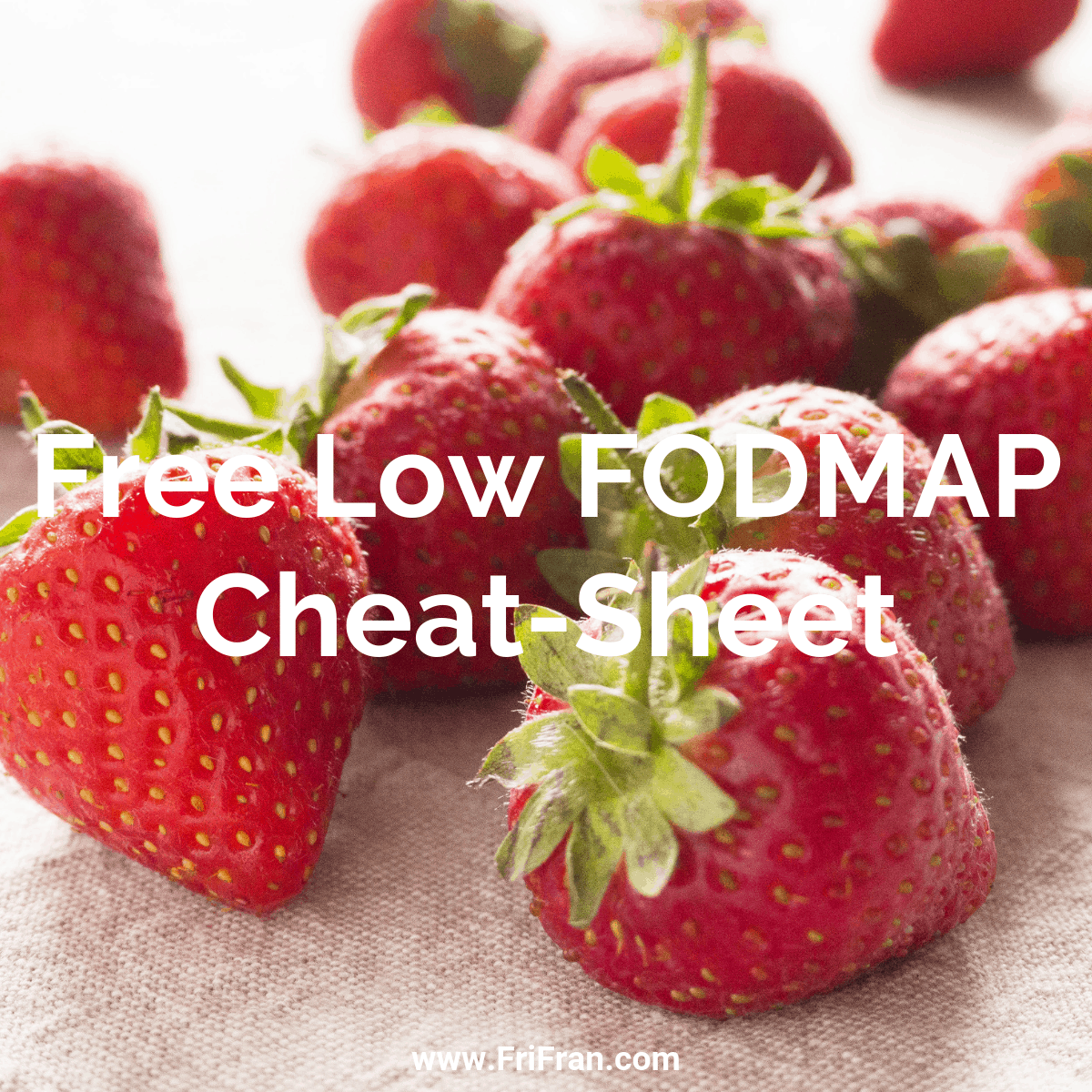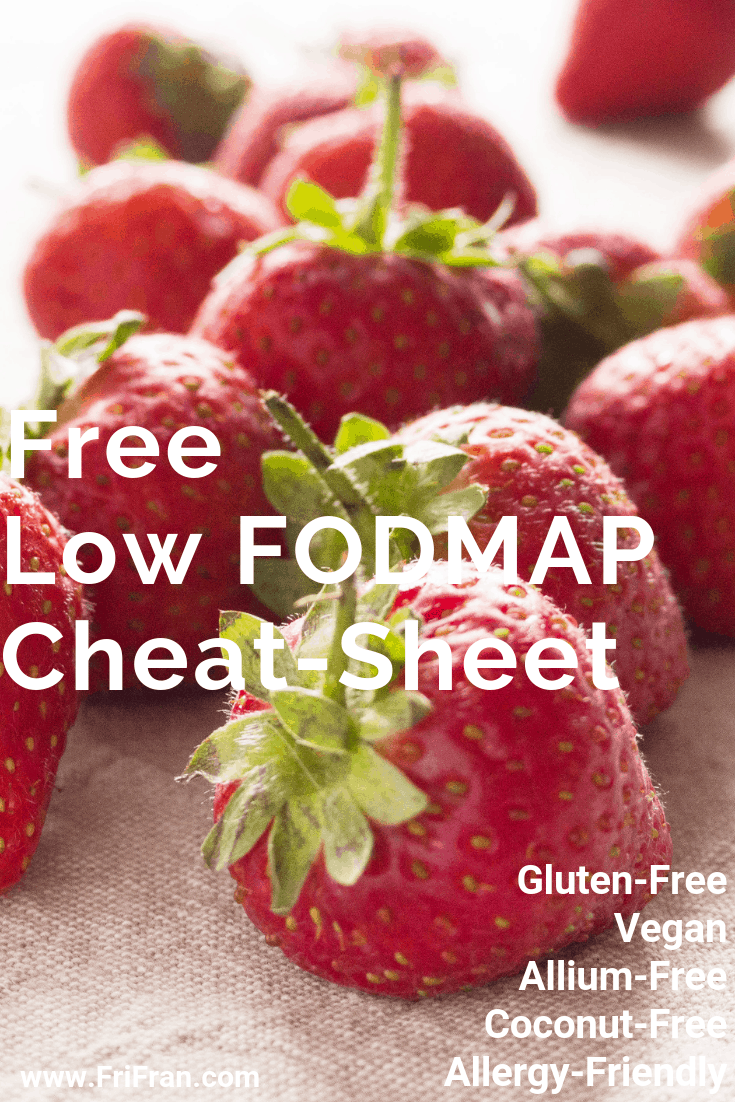
If you know anything about low FODMAP foods or the low FODMAP diet you know it’s really tricky to work out what foods are low or high FODMAP. Lucky for you I have pulled together a Free Low FODMAP Cheat-Sheet that shares my most used low (and high) FODMAP foods. And here’s the good bit it’s totally free for you to download.
How Do I find A List of Low and High FODMAP Foods
If you are doing the low FODMAP diet under medical supervision and want more info there are lots of resources to help you on a low FODMAP diet. I’ve also produced a handy cheat-sheet with a quick reference to high and low FODMAP foods to help you.
Low FODMAP is relatively new and foods that are low or high FODMAP are still being identified to the available lists are not comprehensive at all. Low FODMAP is a work in progress…
***GET YOUR GLUTEN-FREE AND VEGAN AND LOW FODMAP CHEAT SHEET BY CLICKING HERE***
Here’s a Quick reminder What FODMAP Foods Are
FODMAP stands for
- F Fermentable
- O Oligo-saccharides (fructans and galacto-oligosaccharides)
- D Di-saccharides (lactose)
- M Mono-saccharides (fructose)
- A And
- P Polyols (sugar alcohols)
But what the hey do those words mean???
In really simple terms FODMAPs are fermentable carbohydrates.
The fermentable bit is, as you’d guess, things that ferment in your stomach… Produce gas and other such helpful things.
Fructans are chains of the sugar fructose that vary in length. Fructans are poorly absorbed carbohydrates (by everyone). We can’t break them down in the small intestine. Sources of fructans include wheat and rye, lots of fruit and vegetables and ingredients added to foods such as oligofructose or inulin – sometimes called ‘prebiotics’.
Galacto-oligosaccharides (AKA GOS) are chains of the sugar galactose that vary in length. Again these are carbohydrates that are poorly absorbed by everyone. We cannot break them down in the small intestine. Sources of GOS include pulses and legumes such as chickpeas and lentils (two things I love! PAH!).
Lactose is a disaccharide (a double unit sugar) found in animal milk – as it isn’t vegan and so I’ll say no more.
Fructose is a sugar made up of a single unit (AKA a monosaccharide). Fructose can be poorly absorbed by some people. Sources of fructose include fruit and fruit juice, honey and agave. Interestingly glucose is another single unit sugar that is easily absorbed and can help with the absorption of fructose when eaten at the same time.
Polyols are sugar alcohols. These are poorly absorbed carbohydrates in many people. Sorbitol, xylitol and mannitol and the most well known. Major sources of polyols include fruits and vegetables, anything labelled sugar-free such as mints and chewing gum. Polyols cause significant issues for me!!!
And a Quick Reminder Why Some People Have to Avoid High FODMAP Foods
The gut is the high-speed nutrient delivery service for your body. Many people experience experience gut (gastrointestinal tract) problems that are often attributed to ‘Irritable Bowel Syndrome’ AKA IBS. Gut problems can include diarrhoea, constipation, bloating, abdominal pain, cramps and wind. These symptoms can also occur in people who have other conditions such as Inflammatory Bowel Disease (IBD) such as Crohn’s Disease or Ulcerative Collitis, coeliac disease and bowel cancer.
So, if you have any gut problems you need to get to the bottom of them by visiting your GP.
Dietary changes can have a very positive impact on people with gut issues and a low FODMAP diet is one of the options. Your GP and dietitian can suggest a plan and work with you it.
A low FODMAP diet can help some people with gut issues identify FODMAPs that may cause them issues, avoid them and therefore reduce symptoms.
What are your favourite low FODMAP foods or recipes? Drop a comment below or ping me on social media! 🙂
***GET YOUR GLUTEN-FREE AND VEGAN AND LOW FODMAP CHEAT SHEET BY CLICKING HERE***
